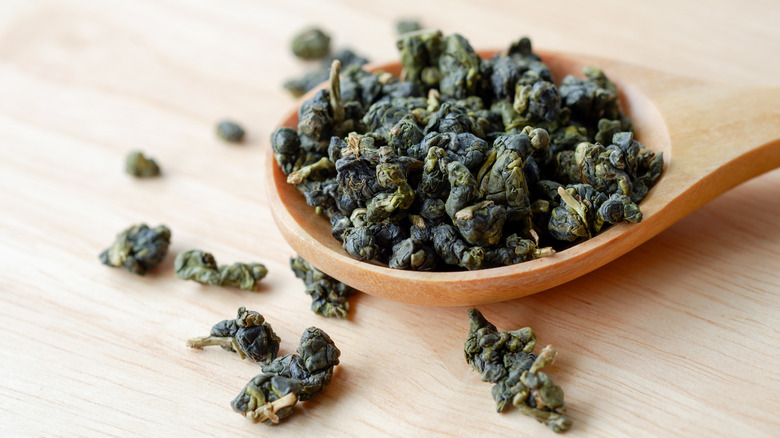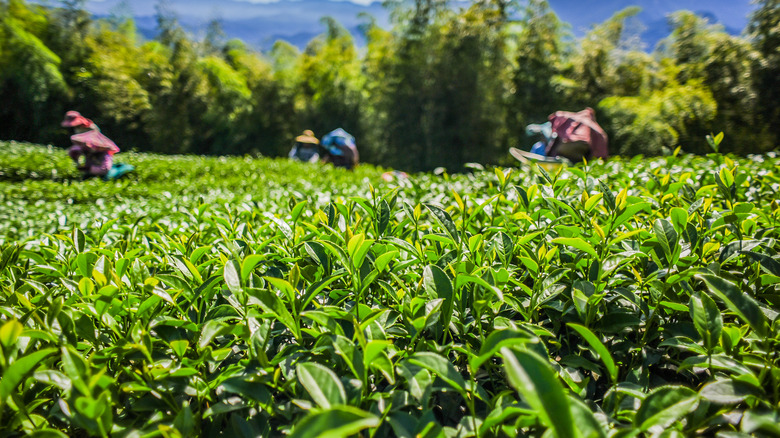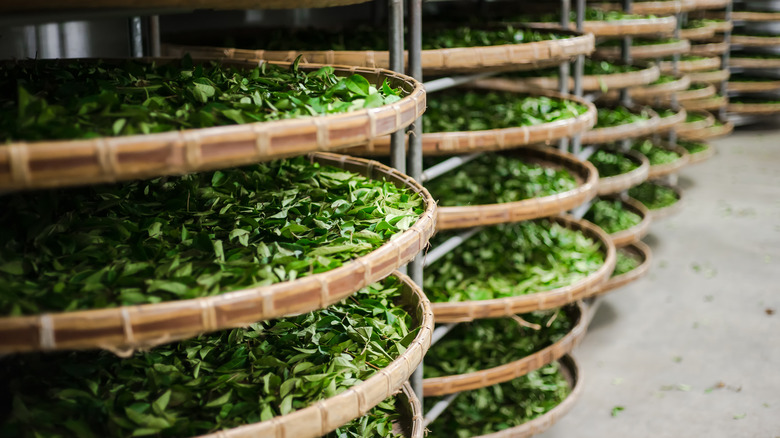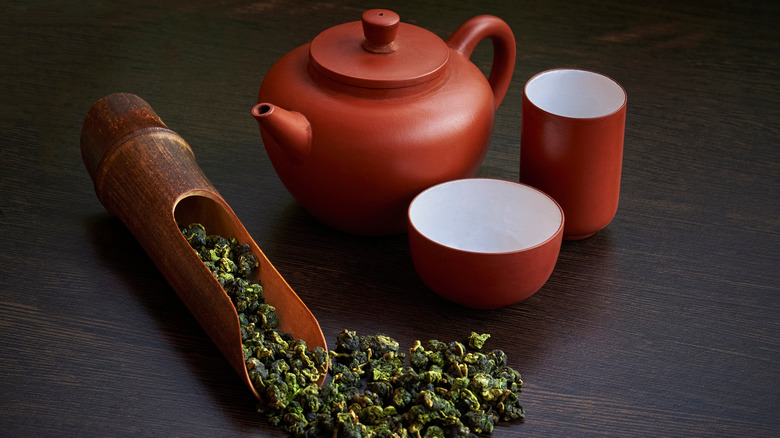What Is Oolong Tea And What Does It Taste Like?
There are so many ways to brew a beverage with different herbs and flowers today — from mint to rose, chamomile to lavender, even lemongrass. But the brew that is technically considered "true tea" actually comes from the Camellia sinesis plant, whose leaves yield different varieties of the herbal drink, depending on when its leaves (and buds) are harvested and oxidized (via The Spruce Eats).
The practice of brewing and drinking tea began in China several thousands of years ago; legend has it that in 2737 BC, an emperor and herbalist named Shen Nung was drinking boiled water, when the leaves of a nearby tree made their way into the drink (via UK Tea & Infusions Association), thus birthing a worldwide practice that is respected even today. While no one really knows what kind of tea the emperor came up with, we do know the history of some variations. For example, when compared to black tea, oolong tea can be considered a relative newcomer, since its popularity appeared to take root within the movers and shakers of the Qing Dynasty (via Sencha Tea Bar).
While plenty is known about black tea and green tea, both of which are brewed from Camellia leaves, less perhaps is known about oolong, which has a reputation as the "champagne of the tea world" because it's not as readily available (via King Ping Best Tea).
Where does oolong tea come from?
Serious Eats describes oolongs as "the wide, wide category of tea in between green and black" and whose flavor profile depends on factors that include when tea leaves are harvested and how they are processed. Unlike black teas that are fully oxidized (the process that happens after you pluck the leaf), and green teas which are only partially so, the leaves for oolong teas are oxidized to anywhere between 8-85%, yielding a range of flavors that can go from light and floral to deep and roasted — and all from leaves that come from the same harvest. This means that unlike many other teas, the process involved in making oolong determines the type of brew that you ultimately end up with and why Serious Eats deems it as the most "cheffy of teas."
While the Camilla sinesis plant is grown and cultivated across many parts of Asia, the amount of work that goes into making oolong can explain why this type is primarily produced in two regions: Taiwan as well as the southern Chinese province of Fujian, says King Ping Best Tea. As they note, "Fujian oolong tea uses the traditional processing method for oolong, whereas Taiwanese tea masters add innovative new steps into processing and improve upon steps such as roll processing (rolling in cloth sacks) and roasting."
In general, oolong tea has about 35 to 60 milligrams of caffeine, according to Sencha Tea Bar.
How oolong tea is made
The process of producing tea out of Camellia sinesis' leaves involves a four-step process: withering or wilting the leaves; rolling them, which breaks down the cell walls; oxidizing to trigger the leaves' transformation from green to brown; and drying, which stops the oxidation process. The length of each step determines how the end-product tastes (via Young Mountain Tea).
But as Serious Eats points out, making oolong demands a different level of skill, because so many variables within the tea-making process need to be managed. Many of the best oolongs are made from tea leaves that are still picked by hand, although machine harvesting is becoming more common. A small shift in oxidation can create a different tea from the one that was intended. As such, there needs to be a knowledge of how the leaves need to be bruised, what temperature and humidity the leaves need to be exposed to, as well as how — and for how long — the oxidation step is allowed to happen (after all, 8-85% percent is pretty precise).
How to brew oolong tea and how it tastes
As mentioned, how an oolong tea will taste depends on how long it has been oxidized. Some teas are fresh and floral, others are seen to be sweet and fruity. It even comes in light, medium, and dark roasts. Light oolongs have a more crisp taste profile and may look like sencha green tea (but with a fuller flavor and a richer aroma). Medium roasts like the dong ding oolong are more robust (via Eco-cha), while dark roasts, including the Iron Goddess of Mercy, have what Serious Eats describes as a "rocky taste that lingers in your throat."
The best oolong teas can hold their flavor even after several infusions — which means you can expect your tea to stay robust even after you've seeped it with boiling water a few times. Tea connoisseurs will tell you that the best way to enjoy oolong is to buy loose leaf tea, and then filling a teapot up to a third of the way with leaves (an infuser isn't recommended for this), according to Serious Eats. The site also says the best way to prepare it is with "small infusions," recommending, "five grams of tea per hundred milliliters is usually [the] minimum; for darker oolongs ... use as much as eight to 10 grams for that same volume, then steep them in a series of short (30 second or so) infusions." This is because oolong leaves are longer and need more time to uncurl and steep.
Always brew with filtered and piping hot boiled water for between one to two minutes, and enjoy.



